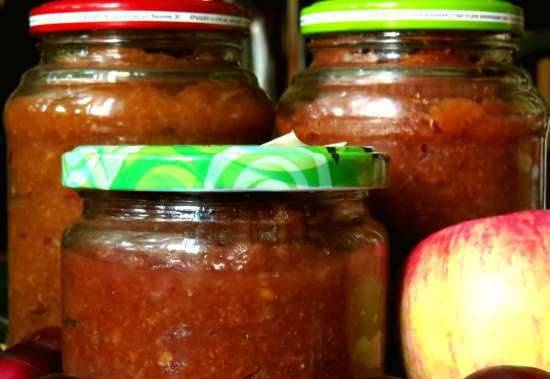|
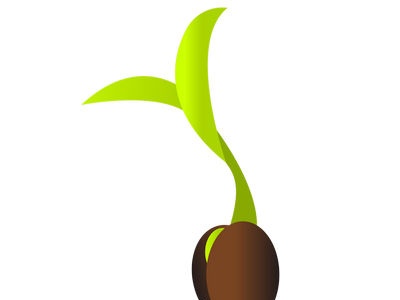 Improving the quality of those plants that are bred for our needs is of great importance. Having begun, perhaps, with semi-random sowing near his hunting hut of the first seeds that came to hand, a person already at the dawn of his cultural history is looking for new plants; Gradually, cultivated plants appear, which differ in nothing or almost nothing from their wild ancestors, and then acquire more and more features. Improving the quality of those plants that are bred for our needs is of great importance. Having begun, perhaps, with semi-random sowing near his hunting hut of the first seeds that came to hand, a person already at the dawn of his cultural history is looking for new plants; Gradually, cultivated plants appear, which differ in nothing or almost nothing from their wild ancestors, and then acquire more and more features.
Over time, man has created around himself a very special "vegetation" - a whole artificial world of such plants, which are not in the wild and never existed.
One of the most important features of cultivated plants is that for the most part they cannot exist without human care for their seeds. On the other hand, a person can use for his needs only those plants, the seeds of which can survive for at least several months, before the onset of a favorable moment for sowing.
Man has created and continues to create such plants that are especially convenient for his economic purposes. He is looking for varieties that do not shower their seeds when ripe, in order to avoid large harvest losses. For example, in corn the grains sit so firmly on the cob that they can only be freed from there by force. For a wild plant, for the most part, the opposite is beneficial - sowing its seeds as easily as possible. It is easy to understand that corn could not exist in the wild at all: the grains remaining tightly perched on the cob would sprout all together when the cob fell on damp ground, and the sprouts would jam each other. But this is not enough, in the overwhelming majority of cases the seeds of cultivated plants are able to germinate at the end of summer, soon after ripening. And this means for them total death in the conditions of our climate: the delicate sprouts of most plant species, of course, could not bear the winter cold. Under the protection of man, the seeds overwinter in his barns and are sown only for the next spring. There are, it is true, winter plants, but they are a minority, and they do not survive the winter in every climate; in the far north only early ripening spring plants can survive. That is why the culture of barley, an early ripening spring plant, goes farthest to the north.
But in order for a plant to be suitable for culture, it must have seeds that can be stored for a long time without losing its germination. Therefore, no matter how valuable a plant is in its qualities, it is completely unsuitable for culture in our conditions if its seeds cannot be kept viable from harvesting to sowing. Finally, there are cases when the seeds remain viable, only under conditions that are artificially difficult to create, for example, storing large masses of grain in water (wild water rice).
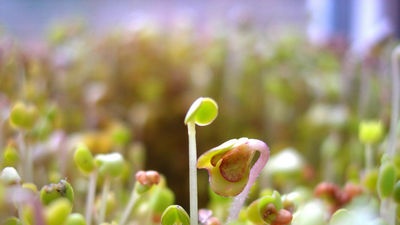 What is the importance of the duration and method of storage of the seeds of the plants obtained from them? What is the importance of the duration and method of storage of the seeds of the plants obtained from them?
Let us first recall what a seed is. The seed of every plant contains an embryo, which has a tiny root and stem; leaves begin to develop from the top of the latter after germination. Germination of a seed consists in the fact that this small embryonic plant begins to grow, gradually developing into a large adult plant. The development of the embryo, like that of any other organism, is based on the fact that its constituent cells multiply. These dividing cells make up the tip of the root and the apex of the stalk in the embryo; all the roots of the future plant originate from several cells of the root tip of the embryo, all aboveground parts of the plant (even in gigantic trees) originate from several primary cells of the apex of the embryonic stem.
The quality of the plants growing from them depends on the quality of the seeds - not only rye will certainly grow from rye seeds, and not wheat, but good rye will grow from the seeds of a good variety of rye, and bad rye will grow from the seeds of a bad one.
As we have just seen, a plant that develops from seeds comes from a few cells of the embryo. Therefore, obviously, the makings of his qualities must be contained in these cells. These inclinations - genes - are contained in the nucleus of the cell, more precisely in the chromosomes - small, several thousandths of a millimeter in size, bodies that appear in the nucleus every time there is a division, that is, multiplication of cells. A set of chromosomes constitutes an apparatus by which the makings of properties are transmitted during the development of an organism from one cell generation to another. This is the apparatus of heredity. Any differences between plants transmitted through seeds, be it the color of flowers, the taste of the fruit or the size of the yield, depend on the inclinations contained in the chromosomes - genes that are transmitted with invariable correctness during each cell division into the resulting cells. Therefore, all the cells that make up an organism contain the same genes. Individual parts of the organism, for example, a leaf, a stem, a root, a flower, differ from each other in a plant because their development occurs under different conditions. Each cell that can reproduce — the tip of the stem or the tip of the root of the embryo — contains in its nucleus the same set of genes, the properties of which affect the character and quality of the developing plant.
The constancy of these properties - "heredity" - depends on the fact that during each cell division, not only the cell divides in half, but each tiny particle of the chromosome, each gene also divides in two, forming two completely identical chromosomes, two completely identical genes. The properties of genes remain unchanged for thousands and millions of years; we know many plants that not only
have not changed over a historical period of several thousand years, for example, since the time of the Egyptian pharaohs, but remained the same as their ancestors who lived millions of years ago and found in ancient deposits of the earth's crust.
A seed embryo is a small store of genes inherited from the plant on which the seed matured. Life with all its peculiarities hides in the seed coat and • waits out unfavorable conditions; as soon as a favorable time comes, development begins, a plant grows, the qualities of which will depend on the quality of the genes contained in the cells of the embryo. These qualities are preserved not only during the germination of the seed, but also at rest, when the seed lies dry.
But what is done with the hereditary inclinations of the embryo contained in the seed as time passes? The duration of this period of the plant's life is usually strictly defined: the oak grows for thousands of years, and the acorn lies, without germinating, only one winter; The willow also grows for many years, but its seeds germinate immediately after falling on wet ground. Very rarely, seeds remain in nature without germinating for more than 6-7 months. What is done with them if they have to lie without germinating for longer periods? Do the hereditary properties of the embryo remain unchanged or, on the contrary, do they change as time passes?
Everyone, of course, knows that there are no such seeds that would forever retain the ability to germinate - sooner or later they lose their germination. The period during which the seeds remain viable is very different for different plants, in rye, for example, it is much less than in wheat, in willow seeds lose germination after a few days after ripening, Indian lotus seeds remain viable for a century or even more ... Such long periods should be considered, however, exceptional.
Seed germination is determined at special seed control stations and is calculated as a percentage.When assessing the quality of seeds, first of all, attention is paid to the percentage of germination; the lower it is, the more seeds must be sown in the same area in order to obtain the required plant density.
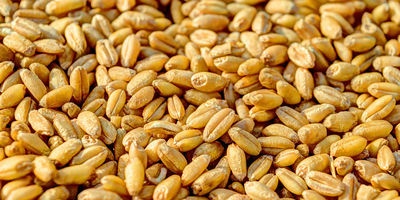 The cause of the loss of germination was still unknown. We only know the conditions that affect the preservation of seed germination. So it was found that a strong moisture content of the seeds leads to a rapid loss of germination, while in dryness, on the contrary, germination lasts longer. Rye seeds in the Moscow region, where it is rather humid, often completely lose their germination by the third year, and in the American state of Arizona, which has a dry climate, the same rye shows good germination for the tenth year. Seeds lose their germination especially quickly in Japan due to the very damp climate there. But even in very dry climates, seeds can quickly lose germination due to their own dampness, for example, if they are not sufficiently dried after harvesting, stacked in a damp room, etc. The cause of the loss of germination was still unknown. We only know the conditions that affect the preservation of seed germination. So it was found that a strong moisture content of the seeds leads to a rapid loss of germination, while in dryness, on the contrary, germination lasts longer. Rye seeds in the Moscow region, where it is rather humid, often completely lose their germination by the third year, and in the American state of Arizona, which has a dry climate, the same rye shows good germination for the tenth year. Seeds lose their germination especially quickly in Japan due to the very damp climate there. But even in very dry climates, seeds can quickly lose germination due to their own dampness, for example, if they are not sufficiently dried after harvesting, stacked in a damp room, etc.
Until very recently, it was believed that no changes in seeds, except for their gradual loss of germination, occurred. All varietal qualities — growth, rate of development, yield, quality of fruit or grain, requirements for soil, climate, etc. — were considered stable, indestructible, more durable than life itself; it seemed that the embryo dies before its hereditary qualities change.
This amazing stability of hereditary inclinations, however, is not absolute. For more than thirty years it has been known that the qualities of plants can change: they sow, for example, awnless wheat - and suddenly one or more spinous plants grow in the field; or yellow seedlings, devoid of chlorophyll, suddenly appear among the sowing, or white-flowered ones appear among plants with red flowers, etc. Such changes are often hereditary, transmitted through seeds to further generations; thus, from the seeds of one emerging spinous plant, exclusively spinous plants grow further. Such rare changes - and they really occur rarely, once in hundreds of thousands and millions of plants - that are passed on to offspring are called mutations. As has now been proven, they are the cause of all the differences between the existing species of living beings: if there were no mutations, there would be no you and me. Life on earth would probably exist in some simplest form.
Most mutations are harmful to the body: in a plant, a mutation very often leads to infertility, to various irregularities and deformities of development. But some of the mutations are beneficial for the plant or beneficial for humans; picking up such mutations, man has created many varieties of plants he needs. It is clear how important it would be for us to learn how to manage mutations. It is also necessary to manage them in order to protect our valuable "varieties from the appearance of unnecessary and harmful qualities in them.
However, the causes of the mutations were still unknown; only in the last 6-7 years has it been proven that their number can be greatly increased by external influences on the body, on the cells that give rise to the body. The strongest effect in this regard is exerted by X-rays, the irradiation of flowers or mature seeds with which can increase the number of mutations by hundreds of times, and therefore very quickly create many new qualities of plants.
What is the cause of mutations? The writer of these lines has been looking for it for a long time. Several years ago it became clear to me that the cause of mutations should be closely related to the life processes taking place in the cell, and not come from the outside, in the form of, for example, X-rays. Mutations are ubiquitous ^ therefore their cause must be ubiquitous. All in all, it was easiest to assume that the conditions causing mutations are created, as just said, inside the cell due to the life processes taking place there.
What processes occur in the seed when it lies, slowly losing its germination? Is there really only a loss of germination or are there any other changes in the properties of the embryo? Do not occur, while the seed is lying, changes in the hereditary properties of the embryo contained in it? Is it true that varietal qualities remain completely unchanged while the embryo is alive?
Practitioners have long known that old seeds do not grow from fresh seeds. Long-term observations have shown us the same thing. Moreover, having worked for several years on artificially producing mutations by irradiating seeds with X-rays, we noticed that the seedlings obtained from such seeds are very similar in their characteristics to those grown from old seeds.
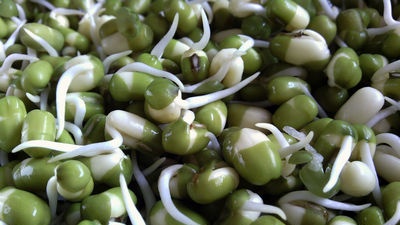 Detailed studies carried out in the laboratory of cytogenetics of the Biological Institute of the CEC named after V.I. K.A. Timiryazev in Moscow, discovered a remarkable phenomenon: the older the seeds, the more mutations are obtained among the plants grown from them. Many ugly plants appear, many of them are almost or completely sterile, completely new varieties appear, etc. These data have already been tested on many types of plants, including rye, corn, barley, they have been tested not only here, but also for border. Another important discovery, made almost simultaneously in our country and, on the basis of our first work, in Canada, was the discovery that the number of mutations depends on heat and humidity: the warmer it is in the room where the seeds are stored, or the more humid it is, the more mutations occur in plants. Detailed studies carried out in the laboratory of cytogenetics of the Biological Institute of the CEC named after V.I. K.A. Timiryazev in Moscow, discovered a remarkable phenomenon: the older the seeds, the more mutations are obtained among the plants grown from them. Many ugly plants appear, many of them are almost or completely sterile, completely new varieties appear, etc. These data have already been tested on many types of plants, including rye, corn, barley, they have been tested not only here, but also for border. Another important discovery, made almost simultaneously in our country and, on the basis of our first work, in Canada, was the discovery that the number of mutations depends on heat and humidity: the warmer it is in the room where the seeds are stored, or the more humid it is, the more mutations occur in plants.
These mutations are expressed in the most varied ways; most of them, as always, are harmful. If the seeds are very old or lay in conditions of too high humidity and heat, then mutations completely disrupt the course of development, and the seed loses germination.
An amazing but completely understandable feature of these mutant plants is that they are almost always chimeras (this is the name for plants consisting of tissues of various hereditary qualities; in fact, any grafted tree, for example a fruit tree, is a chimera, because it consists of hereditary different parts - from wild stock and cultural scion). Why this is so, it is easy to understand if we remember that a plant develops from several cells of the embryo: the roots are formed from the apical cells of the root, and all aerial parts arise from several cells of the apex of the stem. Mutations always occur independently in different cells; therefore, among the initial cells of the embryo, along with mutant cells, normal ones almost always remain, and later one part of the plant develops from mutant cells, the other from normal cells. In rare cases, the plant turns out to be composed of parts of several varieties.
Now we can draw several conclusions of very important practical significance. First, storing seeds means changing. Old seeds are old only in age - in terms of their qualities they are "new", since they may not grow the same plants from which they were collected. Therefore, in order to find as soon as possible new qualities of plants, it is necessary to sow old seeds. Stocks of seeds stored at experimental stations for years and tens of years can serve as a most valuable source for developing new varieties of plants. On the other hand, multiplying old seeds for agricultural crops, we risk spoiling the variety, since most of the mutations are harmful. Second, heat and humidity, which accelerate the appearance of mutations, can be used to artificially produce mutations. This method is not only cheap, simple and generally available, but also better than others because it does not require artificial conditions, such as X-rays. In addition, there will be fewer adverse side effects on the plant. But storing seeds in a too hot room or too much moisture can make them unsuitable for agricultural crops, even if the germination rate does not decrease very much.It is especially necessary to be afraid of self-heating of grain, in which both heat and humidity act simultaneously.
M. S. Navashin
Interesting: the smallest plant
The smallest of the flowering plants - rootless wolfia - belongs to the duckweed family, lives on the surface of stagnant water bodies, covering them with a brown film resembling coffee grounds. The diameter of an individual plant is rarely more than a millimeter. Unlike larger species of duckweed, wolfia does not have a root, it absorbs the necessary substances with the entire surface immersed in water. The plant does not even have leaves, it all consists of a short "stem-leaf", in a special depression of which a new plant buds out about once a day. The total number of plants doubles per day. Blooming wolfia is extremely rare. The flower is located in the upper part protruding from the water and is a depression in which one pistil and one stamen are placed.
Wolffia can be a dangerous weed in rice paddies, but due to its rapid reproduction, it is sometimes specially bred to obtain high-protein and carbohydrate-rich green mass for livestock feed.
|
 Improving the quality of those plants that are bred for our needs is of great importance. Having begun, perhaps, with semi-random sowing near his hunting hut of the first seeds that came to hand, a person already at the dawn of his cultural history is looking for new plants; Gradually, cultivated plants appear, which differ in nothing or almost nothing from their wild ancestors, and then acquire more and more features.
Improving the quality of those plants that are bred for our needs is of great importance. Having begun, perhaps, with semi-random sowing near his hunting hut of the first seeds that came to hand, a person already at the dawn of his cultural history is looking for new plants; Gradually, cultivated plants appear, which differ in nothing or almost nothing from their wild ancestors, and then acquire more and more features. What is the importance of the duration and method of storage of the seeds of the plants obtained from them?
What is the importance of the duration and method of storage of the seeds of the plants obtained from them? The cause of the loss of germination was still unknown. We only know the conditions that affect the preservation of seed germination. So it was found that a strong moisture content of the seeds leads to a rapid loss of germination, while in dryness, on the contrary, germination lasts longer. Rye seeds in the Moscow region, where it is rather humid, often completely lose their germination by the third year, and in the American state of Arizona, which has a dry climate, the same rye shows good germination for the tenth year. Seeds lose their germination especially quickly in Japan due to the very damp climate there. But even in very dry climates, seeds can quickly lose germination due to their own dampness, for example, if they are not sufficiently dried after harvesting, stacked in a damp room, etc.
The cause of the loss of germination was still unknown. We only know the conditions that affect the preservation of seed germination. So it was found that a strong moisture content of the seeds leads to a rapid loss of germination, while in dryness, on the contrary, germination lasts longer. Rye seeds in the Moscow region, where it is rather humid, often completely lose their germination by the third year, and in the American state of Arizona, which has a dry climate, the same rye shows good germination for the tenth year. Seeds lose their germination especially quickly in Japan due to the very damp climate there. But even in very dry climates, seeds can quickly lose germination due to their own dampness, for example, if they are not sufficiently dried after harvesting, stacked in a damp room, etc. Detailed studies carried out in the laboratory of cytogenetics of the Biological Institute of the CEC named after V.I. K.A. Timiryazev in Moscow, discovered a remarkable phenomenon: the older the seeds, the more mutations are obtained among the plants grown from them. Many ugly plants appear, many of them are almost or completely sterile, completely new varieties appear, etc. These data have already been tested on many types of plants, including rye, corn, barley, they have been tested not only here, but also for border. Another important discovery, made almost simultaneously in our country and, on the basis of our first work, in Canada, was the discovery that the number of mutations depends on heat and humidity: the warmer it is in the room where the seeds are stored, or the more humid it is, the more mutations occur in plants.
Detailed studies carried out in the laboratory of cytogenetics of the Biological Institute of the CEC named after V.I. K.A. Timiryazev in Moscow, discovered a remarkable phenomenon: the older the seeds, the more mutations are obtained among the plants grown from them. Many ugly plants appear, many of them are almost or completely sterile, completely new varieties appear, etc. These data have already been tested on many types of plants, including rye, corn, barley, they have been tested not only here, but also for border. Another important discovery, made almost simultaneously in our country and, on the basis of our first work, in Canada, was the discovery that the number of mutations depends on heat and humidity: the warmer it is in the room where the seeds are stored, or the more humid it is, the more mutations occur in plants.







